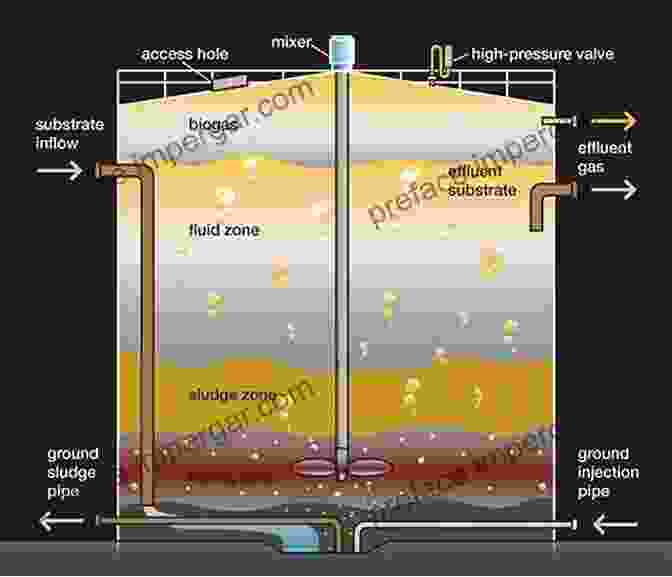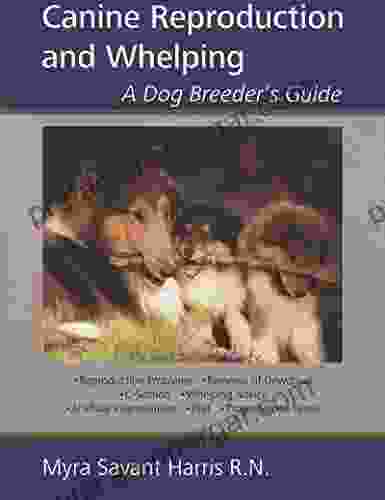Anaerobic Digesters: Generating Clean Renewable Biogas and Reducing Greenhouse Emissions

4.7 out of 5
| Language | : | English |
| File size | : | 8662 KB |
| Text-to-Speech | : | Enabled |
| Screen Reader | : | Supported |
| Enhanced typesetting | : | Enabled |
| Word Wise | : | Enabled |
| Print length | : | 208 pages |
In the face of growing environmental concerns and the urgent need to transition to sustainable energy sources, anaerobic digesters emerge as a promising solution. These innovative systems not only provide a renewable source of energy but also offer an effective means of reducing greenhouse gas emissions and managing organic waste.
What are Anaerobic Digesters?
Anaerobic digesters are closed systems that decompose organic matter in the absence of oxygen. This process, known as anaerobic digestion, is carried out by a consortium of microorganisms that break down complex organic compounds into simpler molecules, primarily methane (CH4) and carbon dioxide (CO2).
The captured biogas is composed of approximately 50-70% methane, making it a valuable source of renewable energy. Biogas can be used to generate electricity, heat homes and businesses, or as a transportation fuel.

Benefits of Anaerobic Digesters
Renewable Energy Production
Anaerobic digesters produce a clean, renewable source of energy. The biogas generated can be used to generate electricity, heat homes and businesses, or as a transportation fuel. By displacing fossil fuels, anaerobic digesters contribute to reducing our dependence on non-renewable energy sources and mitigating climate change.
Reduced Greenhouse Gas Emissions
Anaerobic digestion captures and utilizes methane, a potent greenhouse gas with a global warming potential 25 times greater than carbon dioxide. By diverting organic waste from landfills and incinerators, anaerobic digesters prevent the release of methane into the atmosphere.
Sustainable Waste Management
Anaerobic digesters offer an environmentally friendly solution for managing a wide range of organic waste, including animal manure, food scraps, crop residues, and sewage sludge. By breaking down these waste materials, digesters reduce their volume, stabilize their composition, and produce a nutrient-rich digestate that can be used as a soil amendment or fertilizer.
Economic Benefits
Anaerobic digesters can generate revenue through the sale of biogas and digestate. Additionally, they can reduce waste disposal costs and improve the efficiency of wastewater treatment plants. The financial incentives associated with anaerobic digestion make them an attractive investment for businesses, farms, and municipalities.
Applications of Anaerobic Digesters
Anaerobic digesters have a wide range of applications, including:
- Livestock farms: Anaerobic digesters can process manure from dairy cows, pigs, and poultry, producing biogas and reducing methane emissions.
- Food processing plants: Digesters can break down organic waste from food processing facilities, such as fruit and vegetable scraps, creating biogas and reducing waste disposal costs.
- Municipal wastewater treatment plants: Anaerobic digesters can treat sewage sludge, reducing odors, pathogens, and methane emissions.
- Landfills: Digesters can capture and utilize methane gas from landfills, reducing greenhouse gas emissions and extending landfill capacity.
Anaerobic digesters are a versatile and sustainable technology that offer numerous environmental and economic benefits. By producing clean biogas, reducing greenhouse gas emissions, and managing organic waste, these systems contribute to a more sustainable and resilient future. As the world transitions to renewable energy sources, anaerobic digesters are poised to play a significant role in the fight against climate change and the promotion of a circular economy.
4.7 out of 5
| Language | : | English |
| File size | : | 8662 KB |
| Text-to-Speech | : | Enabled |
| Screen Reader | : | Supported |
| Enhanced typesetting | : | Enabled |
| Word Wise | : | Enabled |
| Print length | : | 208 pages |
Do you want to contribute by writing guest posts on this blog?
Please contact us and send us a resume of previous articles that you have written.
 Book
Book Novel
Novel Page
Page Chapter
Chapter Text
Text Story
Story Genre
Genre Reader
Reader Library
Library Paperback
Paperback E-book
E-book Magazine
Magazine Newspaper
Newspaper Paragraph
Paragraph Sentence
Sentence Bookmark
Bookmark Shelf
Shelf Glossary
Glossary Bibliography
Bibliography Foreword
Foreword Preface
Preface Synopsis
Synopsis Annotation
Annotation Footnote
Footnote Manuscript
Manuscript Scroll
Scroll Codex
Codex Tome
Tome Bestseller
Bestseller Classics
Classics Library card
Library card Narrative
Narrative Biography
Biography Autobiography
Autobiography Memoir
Memoir Reference
Reference Encyclopedia
Encyclopedia Roy Shepard
Roy Shepard Mike White
Mike White J C Zhang
J C Zhang Dr Steven Hatfill
Dr Steven Hatfill Ranjan Datta
Ranjan Datta Douglas J Witten
Douglas J Witten E Bright Wilson
E Bright Wilson E D Smith
E D Smith Domenico Bertoloni Meli
Domenico Bertoloni Meli Simone Cave
Simone Cave Zig Ziglar
Zig Ziglar E Thomas Sullivan
E Thomas Sullivan Kristen Richardson
Kristen Richardson George K
George K Rosi Braidotti
Rosi Braidotti Klaus J Puettmann
Klaus J Puettmann Ibrahim Al Marashi
Ibrahim Al Marashi Philip Lacovara
Philip Lacovara Ian Buchanan
Ian Buchanan E J Gold
E J Gold
Light bulbAdvertise smarter! Our strategic ad space ensures maximum exposure. Reserve your spot today!
 Frank MitchellFollow ·13.5k
Frank MitchellFollow ·13.5k Aleksandr PushkinFollow ·19.2k
Aleksandr PushkinFollow ·19.2k Miguel NelsonFollow ·15.8k
Miguel NelsonFollow ·15.8k Jeffrey HayesFollow ·13.8k
Jeffrey HayesFollow ·13.8k Shaun NelsonFollow ·8.2k
Shaun NelsonFollow ·8.2k Ismael HayesFollow ·18.4k
Ismael HayesFollow ·18.4k VoltaireFollow ·2.1k
VoltaireFollow ·2.1k Dallas TurnerFollow ·8.3k
Dallas TurnerFollow ·8.3k

 Donovan Carter
Donovan CarterUnveiling the Tapestry of Western Civilization:...
: Step into the annals of Western...

 Pablo Neruda
Pablo NerudaUnveil the Secrets: The Welsh Murder Mysteries
Prepare to be captivated as...

 Benji Powell
Benji PowellNot Without Our Consent: Lakota Resistance to...
In the mid-20th...

 Ryan Foster
Ryan FosterUncover the Heroic Exploits of U.S. Navy Special Warfare...
The annals of modern warfare are replete...

 Gage Hayes
Gage HayesPlan to Provide Quality Care for All While Saving...
The healthcare...

 Felix Carter
Felix CarterUnveiling the Timeless Wisdom of Machiavelli: The...
Niccolò...
4.7 out of 5
| Language | : | English |
| File size | : | 8662 KB |
| Text-to-Speech | : | Enabled |
| Screen Reader | : | Supported |
| Enhanced typesetting | : | Enabled |
| Word Wise | : | Enabled |
| Print length | : | 208 pages |












